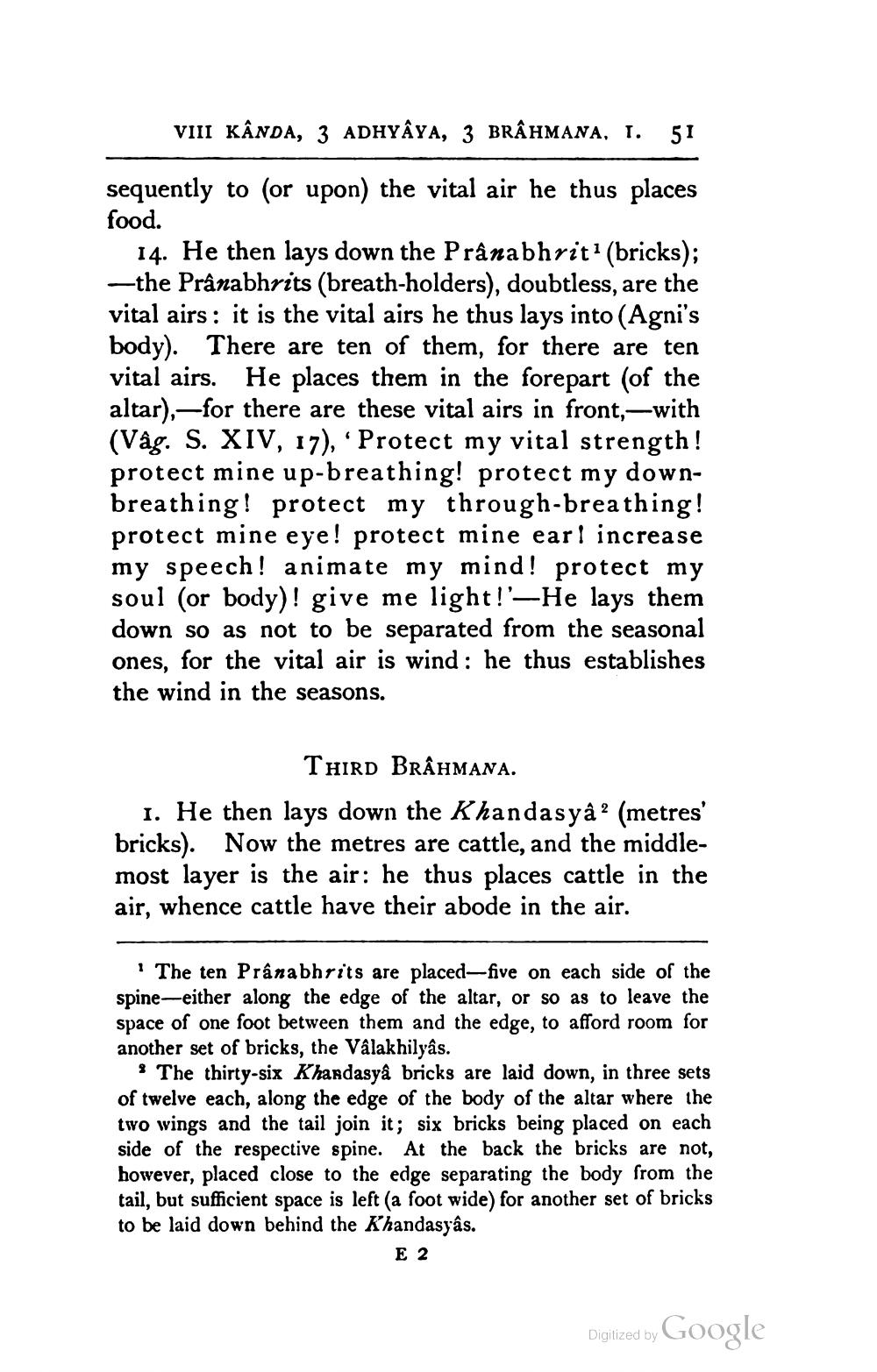________________
VIII KÂNDA, 3 ADHYÂYA, 3 BRÂHMANA, 1. 51
sequently to (or upon) the vital air he thus places food.
14. He then lays down the Prânabhrit? (bricks); -the Pranabhrits (breath-holders), doubtless, are the vital airs : it is the vital airs he thus lays into (Agni's body). There are ten of them, for there are ten vital airs. He places them in the forepart (of the altar),—for there are these vital airs in front, with (Våg. S. XIV, 17), ' Protect my vital strength! protect mine up-breathing! protect my downbreathing! protect my through-breathing! protect mine eye! protect mine earl increase my speech! animate my mind! protect my soul (or body)! give me light!'-He lays them down so as not to be separated from the seasonal ones, for the vital air is wind: he thus establishes the wind in the seasons.
THIRD BRÂHMANA. 1. He then lays down the Khandasyâ ? (metres' bricks). Now the metres are cattle, and the middlemost layer is the air: he thus places cattle in the air, whence cattle have their abode in the air.
1 The ten Pranabhrits are placed-five on each side of the spine-either along the edge of the altar, or so as to leave the space of one foot between them and the edge, to afford room for another set of bricks, the Vâlakhilyâs.
9 The thirty-six Khandasyå bricks are laid down, in three sets of twelve each, along the edge of the body of the altar where the two wings and the tail join it; six bricks being placed on each side of the respective spine. At the back the bricks are not, however, placed close to the edge separating the body from the tail, but sufficient space is left a foot wide) for another set of bricks to be laid down behind the K'handasyâs.
E 2
Digitized by Google




